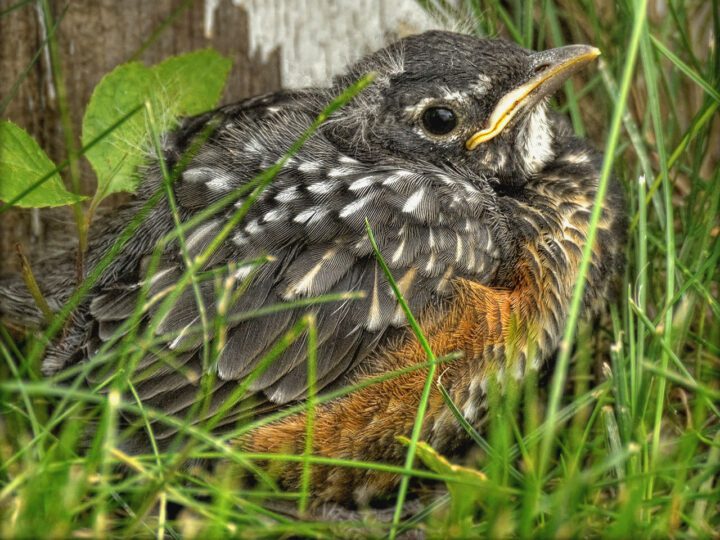I found a baby bird. What do I do?

At some point, nearly everyone who spends time outdoors finds a baby bird—one that is unable to fly well and seems lost or abandoned. Your first impulse may be to help the young bird, but in the great majority of cases the young bird doesn’t need help. In fact, intervening often makes the situation worse. Here’s how to determine whether to take action:
The first thing to do is to figure out if the baby bird is a nestling or a fledgling.
Most of the baby birds people find are fledglings. These are young birds that have just left the nest, and can’t fly yet, but are still under the care of their parents, and do not need our help. Fledglings are feathered and capable of hopping or flitting, with toes that can tightly grip your finger or a twig. These youngsters are generally adorable and fluffy, with a tiny stub of a tail.
When fledglings leave their nest they rarely return, so even if you see the nest it’s not a good idea to put the bird back in—it will hop right back out. Usually there is no reason to intervene at all beyond putting the bird on a nearby perch out of harm’s way and keeping pets indoors. The parents may be attending to four or five young scattered in different directions, but they will return to care for the one you have found. You can watch from a distance to make sure the parents are returning to care for the fledgling.
If the baby bird is sparsely feathered and not capable of hopping, walking, flitting, or gripping tightly to your finger, it’s a nestling. If so, the nest is almost certainly nearby. If you can find the nest (it may be well hidden), put the bird back as quickly as possible. Don’t worry—parent birds do not recognize their young by smell. They will not abandon a baby if it has been touched by humans. If the nest has been destroyed you can make a new one, place the chick back inside and watch to see if the parents come back.
If you have found both parents dead, the young bird is injured, you can’t find the nest, or are absolutely certain that the bird was orphaned, then your best course of action is to bring it to a wildlife rehabilitator. You can find one by doing a Google search for your state and “wildlife rehabilitation.” The Humane Society of the United States also has a page to help you locate a wildlife rehabilitator in your state. A sick, injured or orphaned baby bird may need emergency care until you can get it to a wildlife rehabilitator.
Bottom line: remember that the vast majority of “abandoned” baby birds are perfectly healthy fledglings whose parents are nearby and watching out for them.

All About Birds
is a free resource
Available for everyone,
funded by donors like you
American Kestrel by Blair Dudeck / Macaulay Library
